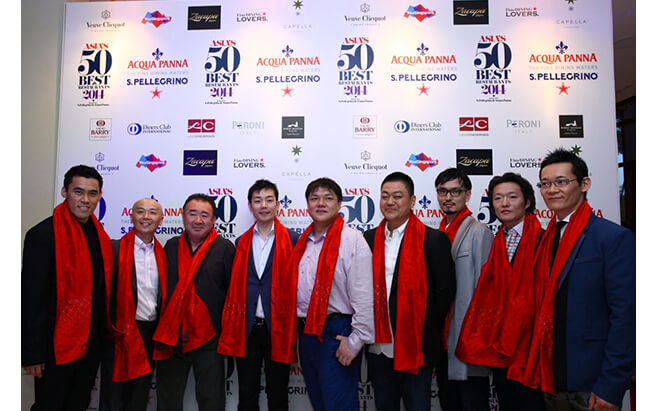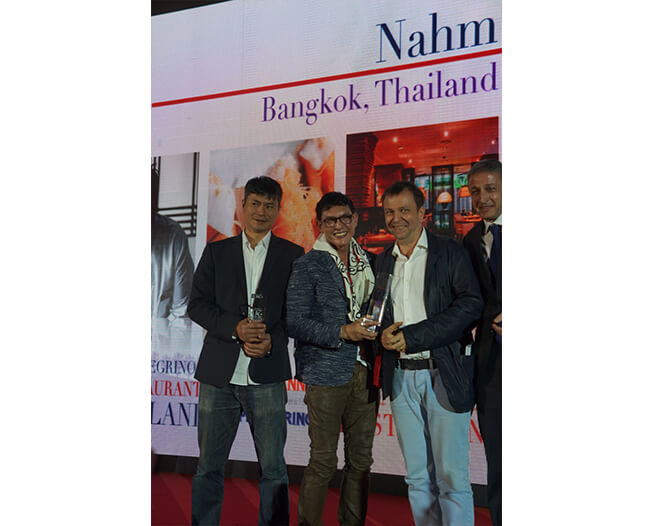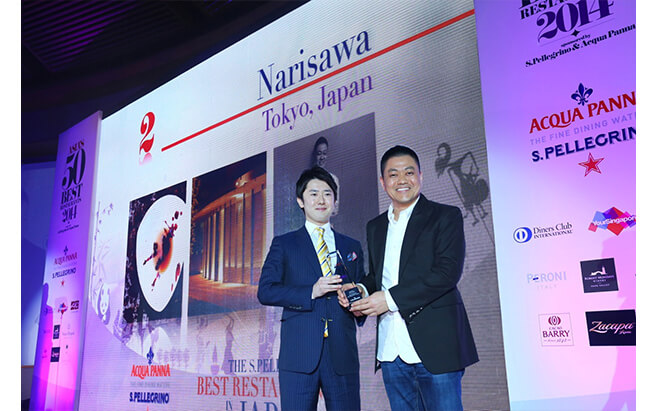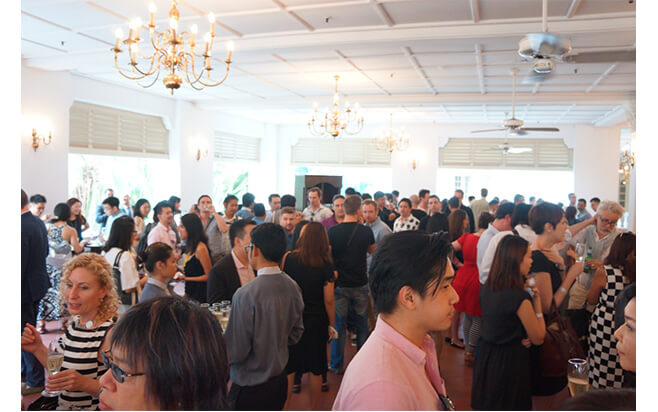Takanori Nakamura is a familiar columnist contributing to the popular series “You can make it! Recipe challenge” in The Cuisine Magazine. Nakamura, who serves as the regional chairperson of Japan for Asia’s 50 Best Restaurants, reports on the award ceremony and the on-site forum.
Japanese award winners. Ten Japanese restaurants were ranked among the 50. Three overseas restaurants which feature Japanese chefs also won prizes. |
The award ceremony of Asia’s 50 Best Restaurants (“Asia’s 50”), a rating of restaurants located in Asia, was held at hotel Capella Singapore in the tiny nation state on February 24th.
The Asia’s 50 was held for the first time in 2013, and this marks its second year. With more visitors attending than the year before, over 700 chefs, food industry people and members of the media packed the site. During the awards ceremony, in an atmosphere reminiscent of the Oscars, the top 50 restaurants were announced.
The final result was revealed, and Nahm in Bangkok emerged with the covetous first prize “San Pellegrino Best Restaurant in Asia.” Last year’s #1 NARISAWA sadly missed a winning streak.
Crew of Nahm, which won first prize in Asia’s 50 in 2014. |
Out of respect for the special influence of NARISAWA, onlookers graciously afforded Chef Narisawa (right) a huge round of applause. |
 |
This time, Bangkok-based restaurants topped the list, with Nahm on top and Gaggan coming in at #3, indicating that eateries in Thailand had the wind at their backs. This may come as a surprise to those who only look at this year’s ranking, but in reality a tailwind has been blowing at their backs for some time now.
Nahm, a creation of Australian chef David Thompson, serves Thai fare based on centuries-old recipes lovingly concocted by generations of Thai mothers, using its own interpretation to create an audacious taste. This approach received world-wide recognition and the restaurant commanded attention after ranking #50 in the World’s 50 Best Restaurants in 2012. In 2013, it went up to #32 and also ranked #3 in Asia’s 50, which was held for the first time. It has also gained popularity among Western travelers venturing in as a “destination restaurant (an eatery worth a special visit)”. Gaggan, ranking at #3 this time, also undoubtedly benefited from this favorable trend.
Japan enjoyed the largest number of newly-ranked restaurants in this year’s Asia’s 50, which included l’Effervescence (#25), Sukiyabashi Jiro (#38) and Sawada (#41). Japan showed its strong presence by coming in second with 10 eateries in the top 50 behind China with 16.
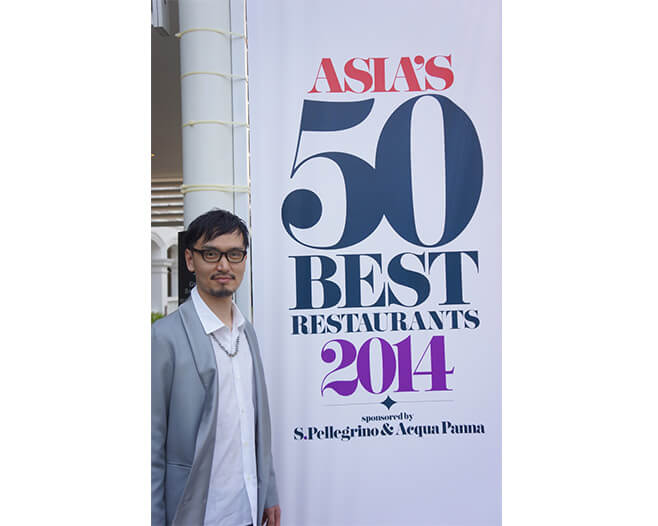 |
Chef Shinobu Namae of l’Effervescence, which ranked for the first time at #25 |
As for Singapore, 8 restaurants appeared on the list, including newcomer Tippling Club (#23), raising the profile of the host country as a hub of Asian gastronomic culture. An eye should also be kept on India, with its bustling economy, as 6 of its restaurants ranked on the list. South Korea’s Jungsik (#20) and Taiwan’s Le Mout (#24) also made the list for the first time. Throngs of journalists from South Korea packed the venue, expressing a great interest in the award, indicating that this country is likely to become a force to be reckoned with in the future.
During the awards, gastronomic professionals from around the world gathered, with an array of events held in addition to the award ceremony. Forums such as “The Future of Food” held on February 23 in the hall of the Raffles Hotel, garnered particular attention, where eleven chefs in turn presented their theories on the culinary arts in unique ways, using a giant screen.
Many visitors to “The Future of Food” forum |
Particular interest was paid to NARISAWA chef Yoshihiro Narisawa, who used a variety of multimedia to illuminate the richness of Japanese food, inspired not only by nature and its ancient village culture, but by the spiritual nature unique to Japan. His theory of Beneficial Gastronomy, which purports that cooking should be not only sustainable but also beneficial for body and mind,seems to have been received enthusiastically. Eye-opening presentations were also given by André Chiang of Singapore’s #1 André and Joan Roca of El Celler Can Roca, which was voted #1 in the original World’s 50 Best Restaurants competition in 2013.
Eleven popular chefs made presentations in the forum. The photo shows Singapore’s #1 chef, André Chiang. |
Including scads of Asian journalists, over 500 people packed the forum venue and the high level of excitement for gastronomy was palpable. I got the distinct feeling that criteria for judging the Asia’s 50 may have included not only restaurant performance, but also the content of their presentations.
Such forums will continue to be held in the next Asia’s 50 and in subsequent years. Journalists like myself as well as chefs share the sincere hope that more eager participants discover these forums to better promote the forefront of gastronomy. In that respect, I think it holds great significance that the ceremony was held in the easily-accessible Asian hub of Singapore.
Text and Photographs by Takanori Nakamura / English translation by Yuko Wada and Sean Gaston
|
